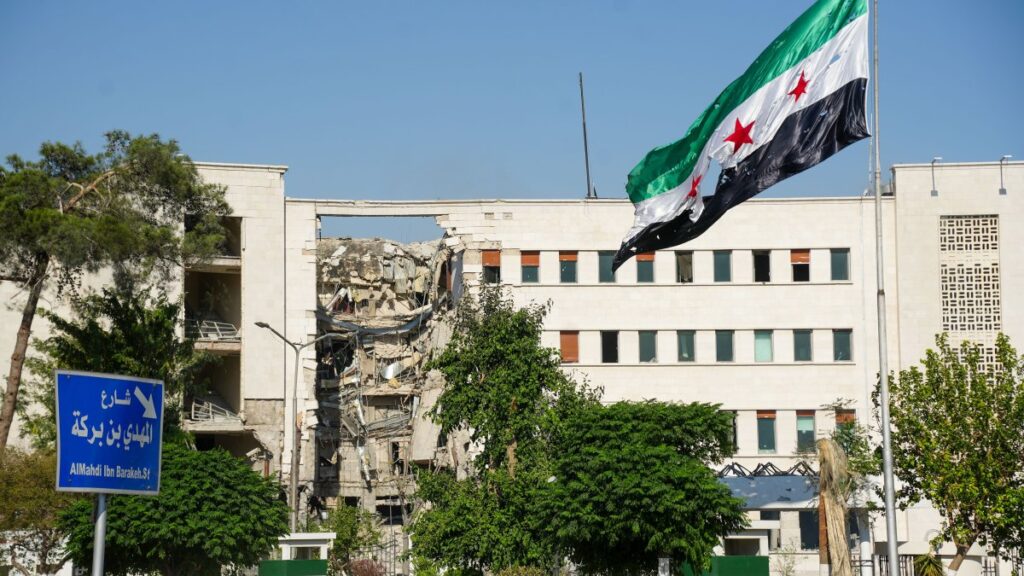
In a chilling reminder of the Syrian war’s most brutal chapters, Damascus woke up on July 16, 2025, to a wave of Israeli airstrikes targeting sensitive government buildings, including the Ministry of Defense and an area near the Presidential Palace. These strikes came amid a horrifying sectarian escalation in the Druze-majority province of Suwayda, which left at least 300 people dead—many of them civilians—and thousands displaced.
But what triggered this sudden explosion of violence? And why has Damascus become the epicenter of a new regional confrontation?
The Roots of the Conflict: Sectarian Rift at Suwayda’s Core
In a matter of days, long-simmering tensions between Druze militias and Sunni Bedouin tribesmen erupted into violent clashes, sparked by mutual kidnappings and retaliatory attacks. The violence escalated rapidly, prompting the transitional government in Damascus to deploy military forces to “restore order,” according to an official statement. But those forces were met with hostility.
Syrian minority affairs researcher Mazen Al-Atrash explains, “The Druze of Suwayda don’t trust the current Islamist-leaning government. They carry deep scars from previous confrontations, so they didn’t hesitate to take up arms again.”
Soon after, documented reports emerged of government troops committing atrocities against Druze civilians, including mass killings during house raids, pushing the situation to the brink of total collapse.
Israel’s Intervention: Protection or Political Message?
Amid the chaos, Israel launched precision strikes targeting tanks in Suwayda, later expanding its operations to include strategic facilities in Damascus. It claimed the intervention was to “protect the Druze community,” emphasizing their presence in Israel and the occupied Golan Heights.
However, Israel’s motives have stirred division even within the Druze themselves. Activist Khaled Abu Fakher notes, “No one really believes Israel is acting purely out of humanitarian concern. Some see them as saviors, others still see them as an occupying force exploiting our suffering.”
Israeli security analyst Uri Levy states, “The message was deeply political. Israel wanted to show it can strike at the heart of Damascus if it believes its allies are threatened.”
After Assad: A Fragile Transitional Phase
These developments underline the deep challenges Syria faces in its post-Assad transitional phase. Despite more than a year passing since Ahmed Al-Shaar assumed leadership of the transitional government following Bashar al-Assad’s fall in 2024, the country remains mired in chaos.
Karim Sadraddin, a researcher at the Carnegie Center, explains: “The new government has failed to integrate local armed groups or reassure minorities. The Druze aren’t the only ones—Kurds too refuse to disarm, and there’s no shared vision for building a national army.”
The situation is further complicated by foreign interference, such as Israeli airstrikes, limited Iranian operations in Deir ez-Zor, and lukewarm support from Gulf nations.
The American Role: Biased Mediator?
Following Israel’s strikes, the U.S. swiftly moved to mediate a ceasefire. Sources reveal that the Trump administration—having returned to office—views Al-Shaar’s government as a bulwark against Iranian influence and a potential partner for peace with Israel.
But excessive U.S. support has shielded the transitional government from pressure to reform. American scholar Michael Hirsh remarks, “The White House wants quick stability, not transitional justice. So it turns a blind eye to serious abuses against Syrian communities.”
Observers note that several Gulf states remain hesitant to offer financial aid until genuine reforms are implemented, including inclusive governance and credible accountability mechanisms.
Syria at a Crossroads: Internal and External Struggles
The latest violence has reignited a crucial question: Can Syria become a state for all its citizens, or will it remain a battleground for internal divisions and external agendas?
International war crimes lawyer James Goldberg says, “Real accountability must start with the formation of an independent international investigative committee, empowered to collect evidence on what happened in Suwayda and Damascus. Without it, the massacres will repeat—and be forgotten.”
Conclusion: A Fire Beneath the Ashes
What happened in July 2025 is not an isolated incident. It’s a warning sign of the deep fractures in post-Assad Syria. A country trying to rise from the ruins of a decade-long war finds itself once again facing old demons: sectarianism, militias, chaos, and foreign interventions.
The painful truth remains—no one truly controls the ground, and no one holds a clear vision for the future. Between Syrians’ hopes for a just, civil state and the harsh reality of power-brokered alliances, Syria continues to wait for a political settlement that may still be far off.